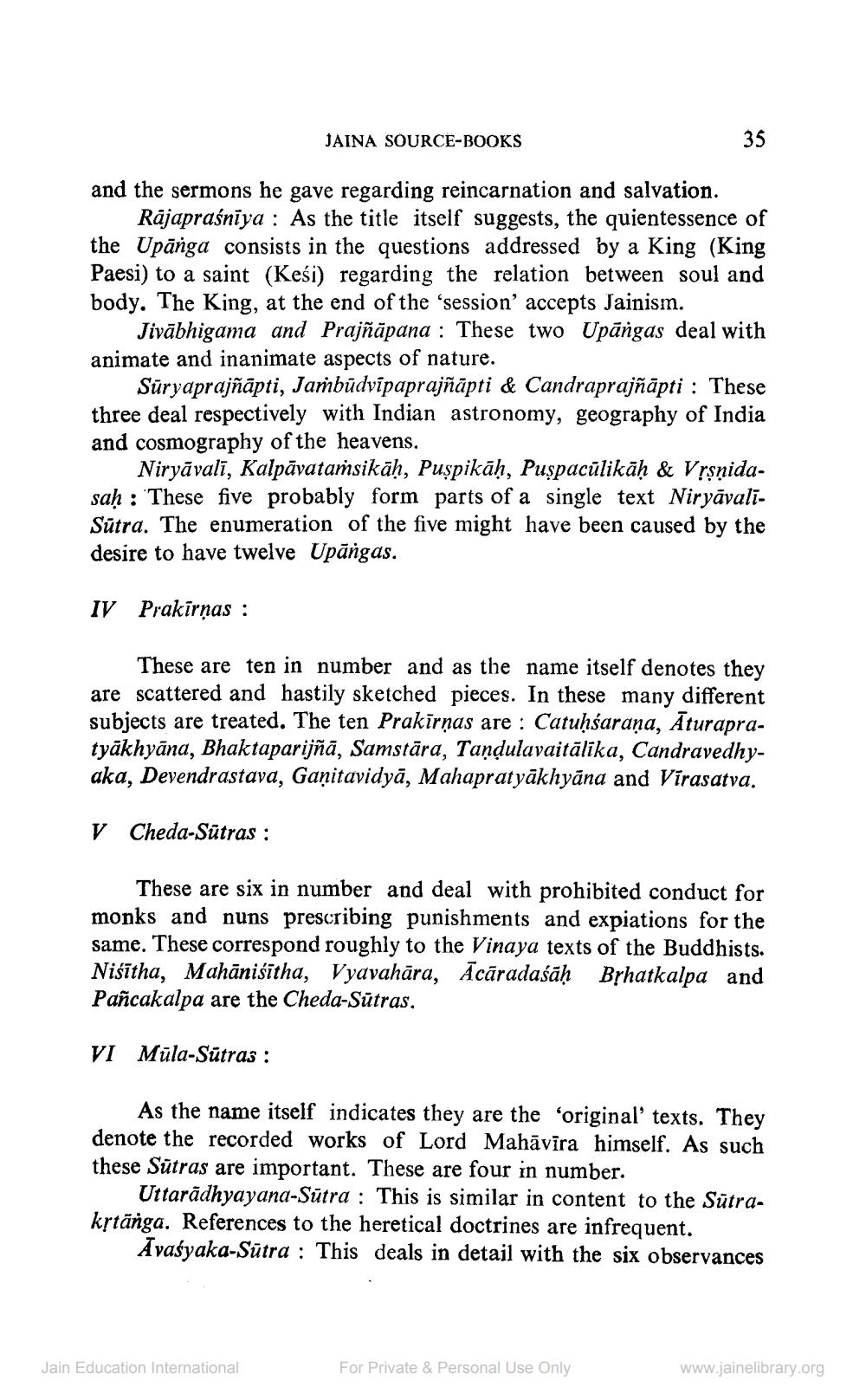________________
JAINA SOURCE-BOOKS
35
and the sermons he gave regarding reincarnation and salvation.
Rajapraśniya : As the title itself suggests, the quientessence of the Upānga consists in the questions addressed by a King (King Paesi) to a saint (Keśi) regarding the relation between soul and body. The King, at the end of the 'session' accepts Jainism.
Jivābhigama and Prajñāpana : These two Upāngas deal with animate and inanimate aspects of nature.
Süryaprajñāpti, Jambūdvipaprajñāpti & Candraprajñāpti : These three deal respectively with Indian astronomy, geography of India and cosmography of the heavens.
Niryāvalī, Kalpāvataṁsikāḥ, Puspikāḥ, Puspacülikāḥ & Vrsnidasaḥ : These five probably form parts of a single text NiryāvalīSūtra. The enumeration of the five might have been caused by the desire to have twelve Upāngas.
IV
Prakīrņas :
These are ten in number and as the name itself denotes they are scattered and hastily sketched pieces. In these many different subjects are treated. The ten Prakīrṇas are : Catuḥsaraņa, Āturapratyākhyāna, Bhaktaparijñā, Samstāra, Taņdulavaitālika, Candravedhyaka, Devendrastava, Gaạitavidyā, Mahapratyākhyāna and Virasatva.
V
Cheda-Sūtras :
These are six in number and deal with prohibited conduct for monks and nuns prescribing punishments and expiations for the same. These correspond roughly to the Vinaya texts of the Buddhists. Nisītha, Mahānisītha, Vyavahāra, Ācāradaśāḥ Brhatkalpa and Pañcakalpa are the Cheda-Sūtras.
VI Müla-Sūtras :
As the name itself indicates they are the original texts. They denote the recorded works of Lord Mahāvīra himself. As such these Sūtras are important. These are four in number.
Uttarādhyayana-Sūtra : This is similar in content to the Sūtrakrtānga. References to the heretical doctrines are infrequent.
Avaśyaka-Sutra : This deals in detail with the six observances
Jain Education International
For Private & Personal Use Only
www.jainelibrary.org




